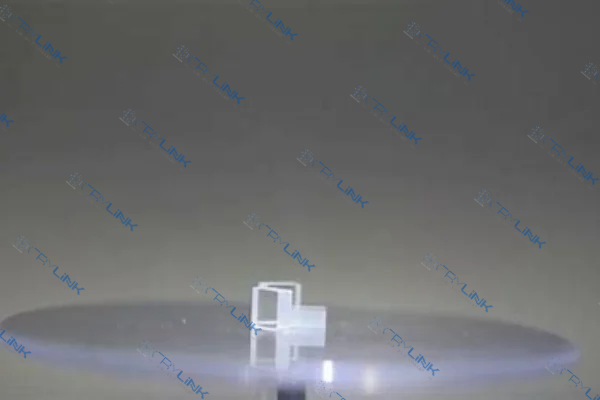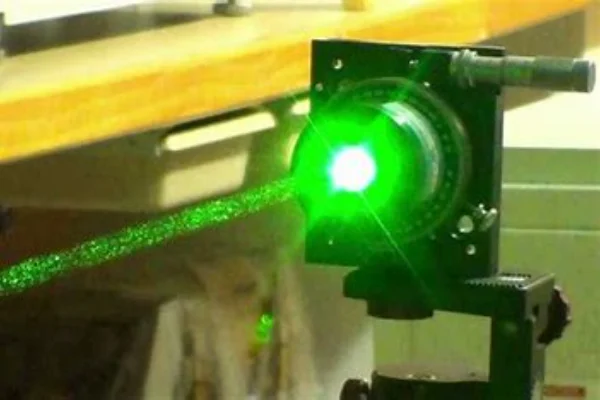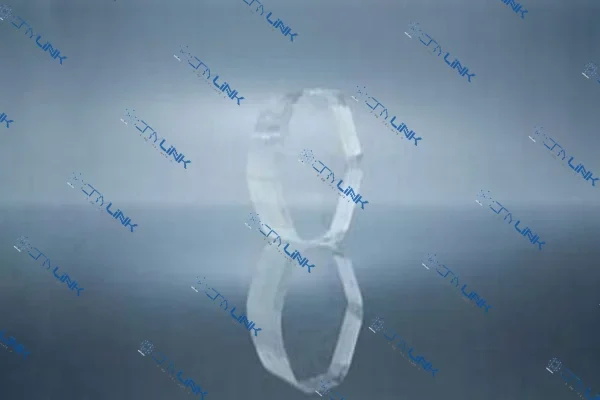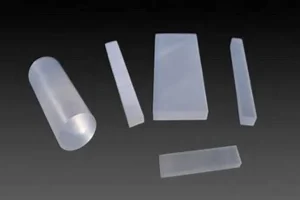Introduction to Optical Crystals
Optical crystals, such as Beta Barium Borate (BBO), Lithium Triborate (LBO), and Potassium Dihydrogen Phosphate (KDP), are at the forefront of technological advancement. Leveraging their unique properties, we have been able to innovate and create solutions in a myriad of fields ranging from medicine to information technology.
Understanding Optical Crystals
Optical crystals are unique materials that can manipulate light. The beauty of these crystals lies in their ability to alter the direction, speed, and polarization of light, thereby enabling a broad spectrum of applications.
Diving into the World of BBO Crystals
BBO, short for Beta Barium Borate, is one of the most versatile and efficient optical crystals available today. Its applications span across a wide range of industries due to its exceptional properties.

Key Properties of BBO Crystals
Adding to the attributes that make BBO crystals highly valuable, their impressive transparency range spans from 190 nm to 3500 nm, accommodating both ultraviolet and infrared light. This vast spectral range has paved the way for diverse applications such as ultraviolet spectroscopy and infrared lasers. Another notable quality is their high damage threshold, which often exceeds 10 GW/cm² for a 10 ns pulse at 1064 nm, making them highly resistant to laser-induced damage. This trait is vital for their usage in high-power laser systems. Moreover, their broad phase-matching ability allows for efficient frequency conversion across a wide wavelength range, ensuring their usage in areas like optical parametric oscillation and electro-optic modulation. These unique characteristics make BBO crystals a cornerstone in advancing optical applications.
Applications of BBO Crystals
BBO crystals’ distinct attributes play a pivotal role in the advancement of several key technologies. Their extensive use in laser technology stems from their ability to efficiently double, triple, and mix laser frequencies, thereby expanding the usable spectrum of laser systems. In non-linear optical applications, BBO crystals are leveraged to alter the frequency and polarization of light in a non-proportional manner, providing the ability to generate new frequencies from incident light. Furthermore, their high damage threshold and broad phase-matching capabilities have positioned them as crucial elements in the cutting-edge field of quantum computing, where they are utilized to manipulate quantum states of light for information processing tasks.
In the telecommunications sector, BBO crystals facilitate advanced signal processing techniques, including the generation and detection of complex optical states. Lastly, in medical imaging, particularly optical coherence tomography, BBO crystals are employed for their ability to emit light with a broad spectrum of frequencies, allowing for high-resolution, non-invasive imaging of biological tissues. Overall, the versatility of BBO crystals enables them to be key components across a broad array of sectors and applications.

Exploring the Potential of LBO Crystals
Like BBO, Lithium Triborate (LBO) crystals are another important player in the optical crystal landscape. Known for their broad transparency and phase-matching ranges, LBO crystals have enabled breakthroughs in various industries.
Properties That Make LBO Crystals Stand Out
LBO crystals, with their remarkable properties, hold a significant place in the field of optical technology. They possess a high damage threshold, making them capable of withstanding intense laser power without getting damaged. This property proves vital in applications where the crystals are subjected to high-energy laser beams. Further enhancing their allure is their wide transparency range, spanning from the ultraviolet to the mid-infrared spectral region, which allows them to accommodate a large variety of wavelengths. This opens doors to numerous applications that require a broad wavelength range.
Additionally, their broad phase-matching ability allows LBO crystals to efficiently alter the frequency of light across a wide wavelength range. This property is of paramount importance in nonlinear optics, where phase matching can enable the generation of new frequencies from incident light. But what truly sets LBO crystals apart is their higher thermal conductivity compared to many other nonlinear optical crystals. This quality helps them dissipate heat more effectively, ensuring their stability in high-power applications and making them a preferred choice for environments where thermal management is critical. These outstanding properties lend LBO crystals a unique standing in the world of optical technology.

Applications Leveraging LBO Crystals
LBO crystals are instrumental in an array of applications, primarily in laser technology, due to their distinct properties. Their wide transparency range and high damage threshold make them the perfect choice for frequency doubling and tripling, which involve transforming a laser’s fundamental frequency into the second or third harmonic, thereby widening the utility of lasers. With their high thermal conductivity, LBO crystals excel in high-power pulsed laser systems, where they effectively manage heat build-up while ensuring optimal performance.
This same attribute is also beneficial in continuous-wave lasers, where sustained operation generates considerable heat. Additionally, their broad phase-matching ability facilitates the production of different frequencies from a single input, leading to their use in optical parametric oscillators. These devices generate a pair of waves with frequencies that sum to the frequency of the incoming wave, a capability vital in light detection and ranging systems, spectroscopy, and medical imaging. LBO crystals also find their place in optical parametric amplifiers, where they amplify a weak signal beam using a strong pump beam, while conserving energy. With such a wide array of applications, LBO crystals truly stand at the forefront of optical technology.

Spotlight on KDP Crystals
Last but certainly not least, let’s delve into Potassium Dihydrogen Phosphate (KDP) crystals. These optical crystals have a distinct set of properties that make them an essential component in a range of applications.

Defining Features of KDP Crystals
KDP crystals possess a unique combination of characteristics that make them invaluable in many technological applications. Notably, their high optical damage threshold enables them to withstand high levels of laser power, making them suitable for intensive applications such as high-power laser systems. Their wide transparency range, spanning from the deep ultraviolet to the far-infrared region, makes them extremely versatile, accommodating a wide spectrum of light for various applications. Another significant feature is their high electro-optic coefficients, which essentially define the degree of change in refractive index resulting from an applied electric field. This property makes KDP crystals extremely effective in electro-optic applications such as modulators and switches. Moreover, KDP crystals have exceptional UV transmission properties, making them ideal for applications dealing with ultraviolet light, such as UV microscopy and lithography. Lastly, their high efficiency in frequency doubling, specifically in the conversion of a laser’s fundamental frequency to its second harmonic, expands the usable spectrum of laser systems. This combination of unique features consolidates KDP crystals’ place as a top choice in various fields.
Applications Harnessing the Power of KDP Crystals
Owing to their distinct properties, KDP crystals find substantial application in various fields. With high electro-optic coefficients, these crystals are highly efficient in electro-optic modulation, which involves the change in refractive index resulting from an applied electric field. This is essential in controlling the amplitude, phase, polarization, or propagation direction of light. KDP crystals are also used extensively in Q-switching, a technique used to produce high-intensity pulsed laser beams. This is especially critical in industrial applications where high-power pulses are needed for material processing. With their excellent UV transmission and high frequency-doubling efficiency, KDP crystals are effective in applications requiring UV and deep-UV wavelengths, including microfabrication and high-resolution imaging. Furthermore, they are integral to high-power laser systems, such as those used in laser fusion experiments, due to their high optical damage threshold. These systems require robust crystals that can withstand high-power laser beams without degradation, a condition that KDP crystals meet with ease. Therefore, the role of KDP crystals is paramount in diverse applications, testifying to their significant contribution in the optical technology field.

Looking to the Future of Optical Crystals
The future landscape of technology is immensely promising, thanks to the remarkable properties of BBO, LBO, and KDP crystals. The potential applications of these crystals extend far beyond their current uses, paving the way for groundbreaking advancements. For instance, the development of more efficient and powerful laser systems can be realized by leveraging the high damage threshold and frequency conversion capabilities of these crystals. Their broad transparency ranges can be employed in the advancement of spectroscopy techniques, leading to more detailed and accurate analysis of materials.
In the realm of telecommunications, these optical crystals could play a vital role in enhancing the speed and capacity of optical communication systems. In addition, the medical field stands to benefit from these crystals, particularly in improving imaging techniques and enabling minimally invasive surgical procedures using high precision lasers.
Furthermore, the potential of these crystals in the emerging field of quantum technology cannot be overstated. With their ability to manipulate the quantum states of light, they could revolutionize quantum computing and information processing. These developments would have a transformative impact on numerous sectors, including healthcare, defense, finance, and logistics.
As we venture deeper into the age of technology, the exploration of the potential of BBO, LBO, and KDP crystals continues. Undoubtedly, their remarkable properties will be the cornerstone of numerous technological breakthroughs, reinforcing their integral role in shaping the future.
Conclusion
In our exploration of BBO, LBO, and KDP crystals, we’ve glimpsed into the heart of optical technology. Their unique properties and the wealth of applications they enable underscore their importance in propelling forward numerous industries. As we continue to innovate and understand these crystals better, it’s clear that the future of optical technology is bright, and optical crystals will be at the forefront of this shining advancement.
Frequently Asked Questions
- 1. What are the key properties of BBO crystals?
- BBO crystals have a wide transparency range, high damage threshold, and broad phase-matching ability. They are extensively used in frequency conversion and electro-optic modulation.
- 2. What sets LBO crystals apart from other optical crystals?
- LBO crystals are known for their high thermal conductivity, wide transparency range, and broad phase-matching ability. They are widely used in laser technology, including high-power pulsed lasers.
- 3. What makes KDP crystals unique?
- KDP crystals have a high optical damage threshold, excellent UV transmission, and high electro-optic coefficients. They are predominantly used in electro-optic modulation and high-power laser systems.
- 4. What are the future applications of optical crystals?
- The potential future applications of optical crystals are vast, given the ongoing advancements in research and technology. They are expected to drive further innovation in fields such as quantum computing, telecommunications, and medicine.
- 5. What role do optical crystals play in laser technology?
- Optical crystals are integral to laser technology. They are extensively used in laser frequency doubling, tripling, mixing, and in other non-linear optical applications due to their unique properties.







